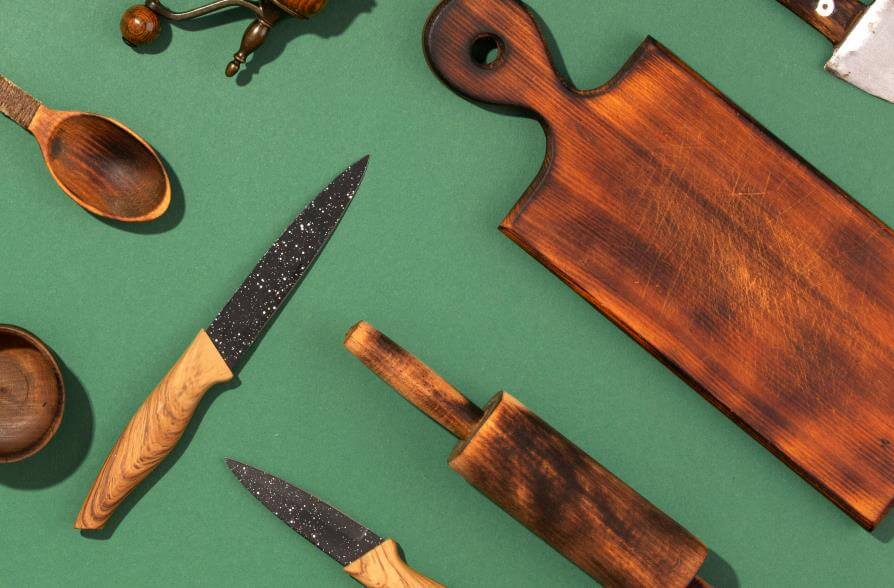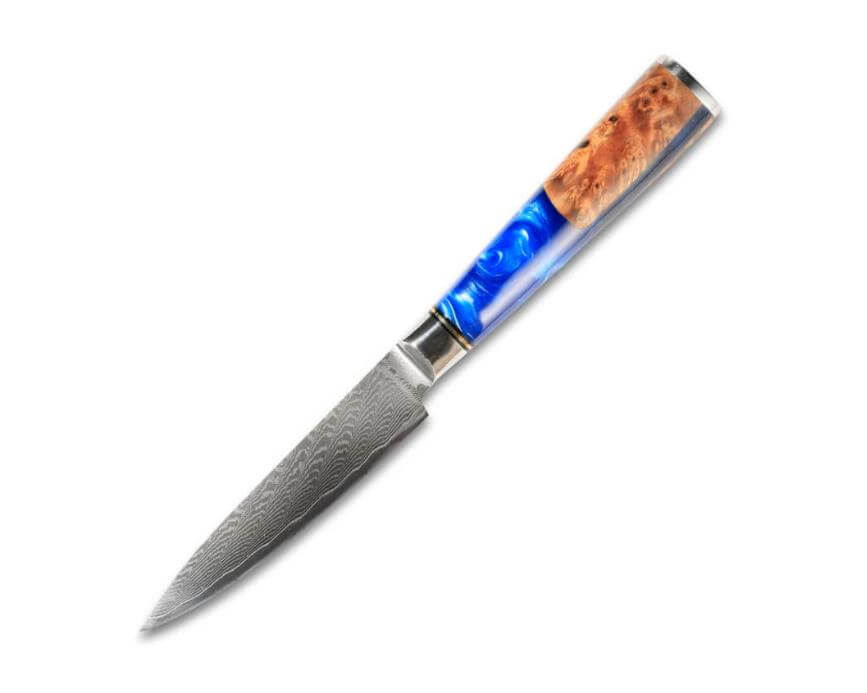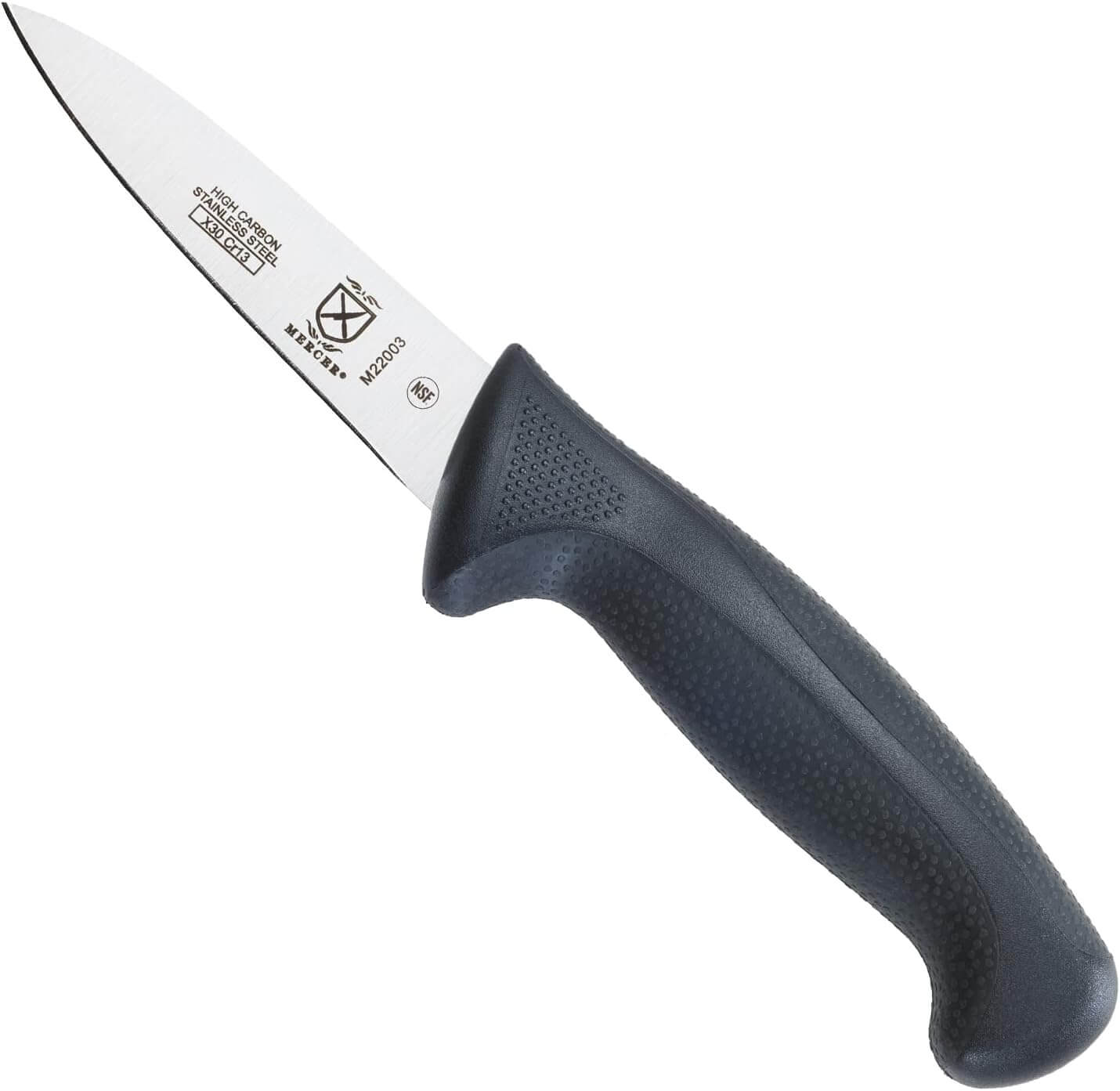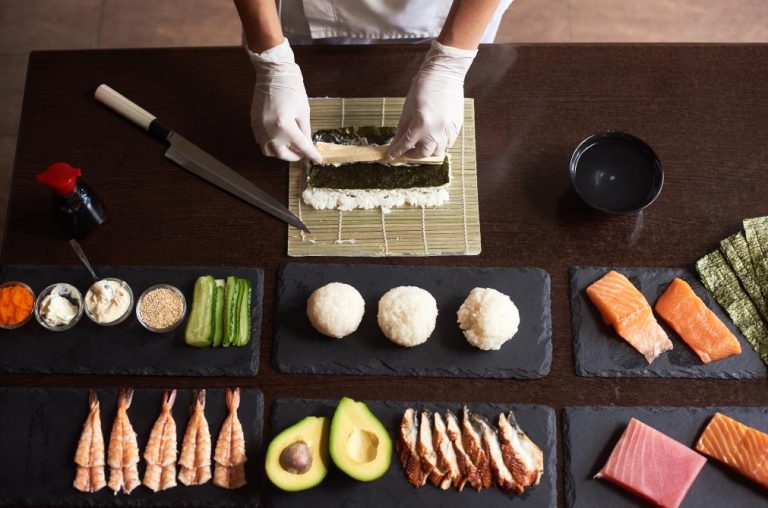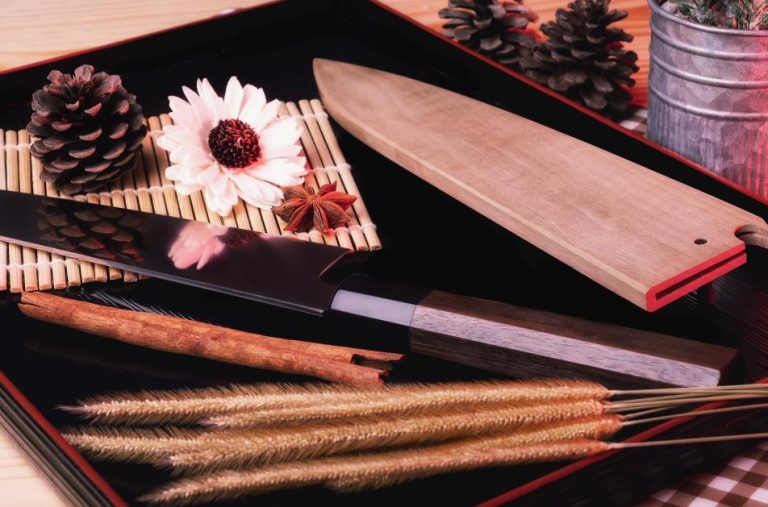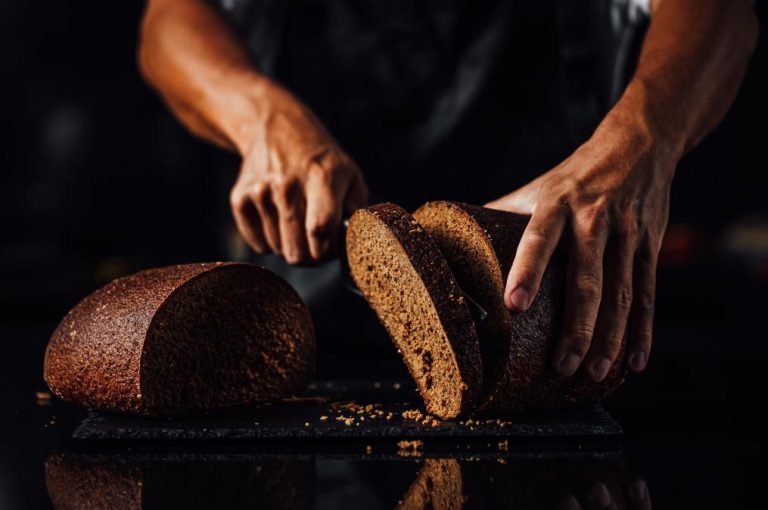When it comes to precision in the kitchen, the right knife makes all the difference. Two of the most commonly confused tools are the utility knife and the paring knife, both compact, both versatile, but designed for different tasks.
This guide breaks down what sets them apart. We’ll walk you through what each knife is used for, how they compare in size and function, and which one is better suited for your everyday prep.
Whether you’re running a kitchenware store or simply upgrading your knife drawer, understanding the difference helps you make smarter choices.
What is a Utility knife
A utility knife is a versatile mid-sized kitchen knife designed for tasks that are too small for a chef’s knife and too large for a paring knife.
Typically measuring between 4 to 7 inches in length, utility knives are slim, lightweight, and easy to control, making them ideal for precise slicing, trimming, or cutting through medium-sized fruits, vegetables, and meats.
The blade often has a pointed tip and a narrow profile, allowing it to handle detail work with more finesse than bulkier knives.
While it doesn’t replace a chef’s knife for heavy-duty chopping, it’s the go-to blade for in-between jobs in both home and professional kitchens.
In short, utility knives bridge the gap between heavy prep and delicate cutting, earning their name from their all-purpose design.
Culinary Uses of a Utility Knife
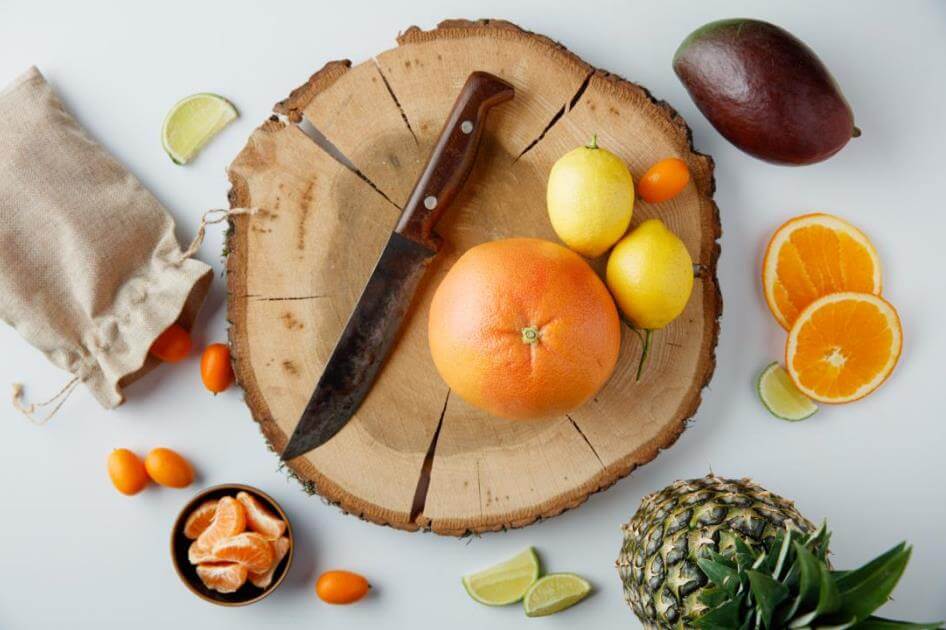
- Slicing sandwiches and rolls with clean cuts
- Trimming fat or sinew from meat
- Cutting citrus fruits or medium-sized vegetables
- Halving bagels, soft breads, or cheese blocks
- Performing general prep tasks when a chef’s knife feels too large
Buy Wholesale Knives and Start Scaling up with Us Today
Contact us and connect with a sales rep to get a free quote.
What is a Paring knife
A paring knife is a small, nimble kitchen knife made for precision tasks that require control and delicacy.
It typically has a blade length of 2.5 to 4 inches, making it ideal for peeling fruits, deveining shrimp, trimming fat, or making intricate garnishes.
Unlike a utility knife, a paring knife is meant to work off the cutting board. Its short, lightweight design allows it to be used comfortably in hand—like a peeler or scalpel, especially when removing blemishes or creating fine cuts.
Paring knives come in different blade styles, including spear point, bird’s beak, and sheep’s foot, each suited for specific tasks. In any case, their primary strength lies in precision and control, not power.
Culinary Uses of a Paring Knife
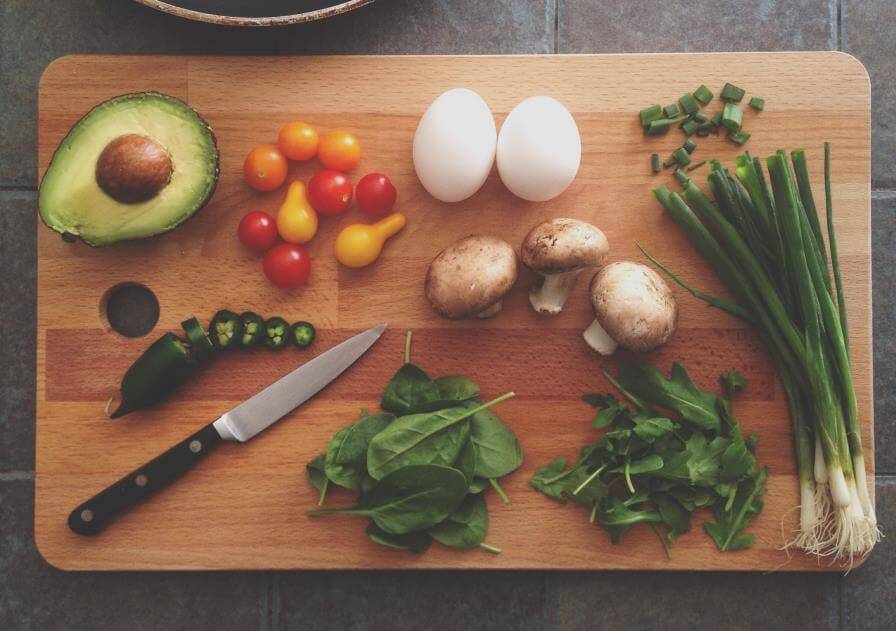
- Peeling apples, potatoes, or citrus
- Segmenting oranges or grapefruits
- Deveining shrimp or removing seeds
- Making decorative garnishes or precise incisions
- Trimming fat, stems, or blemishes directly in hand
Buy Wholesale Knives and Start Scaling up with Us Today
Contact us and connect with a sales rep to get a free quote.
Utility knife vs. Paring knife: The key differences
Despite their similarities, utility and paring knives have critical details that set them apart. Here are the differences between these two kitchen knives, from design to culinary uses to cutting preference.
| Utility Knife | Paring Knife | |
| Origins | Western | Western |
| Blade length | 4 to 10 inches | 2 to 4 inches |
| Weight | 100 to 150 grams | 80 to 100 grams |
| Design | Slim build with a stabby tip that has a slightly curved or flat edge. | The same as utility knives but has variations, such as bird’s beak paring knives. |
| Common uses | General food preparation and slicing. | Cutting, peeling, and cleaning up vegetables and fruits. |
Blade design
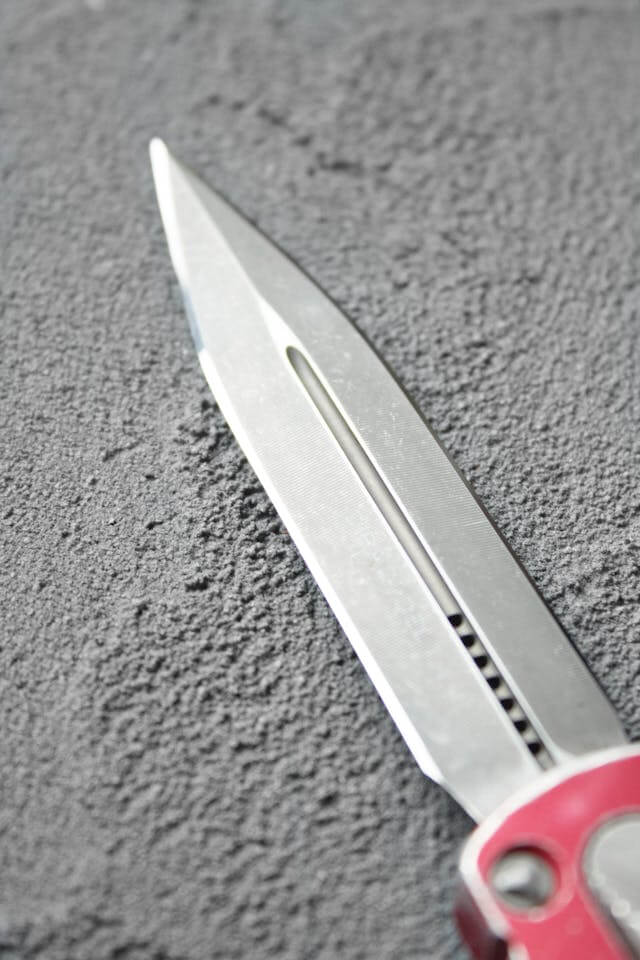
The paring knife is much shorter than the utility knife. Even the smallest ones are lengthier than paring knives.
The compact size eliminates a thick heel. While there are utility knives with heels similar to a chef’s knife, these aren’t prominent with paring knives. They follow a slim build throughout the blade, featuring a straight edge that curves towards the tip.
Another difference is the blade thickness. Paring knives have slimmer blades. Despite having a thin blade, paring knives don’t have much flexibility.
Overall, the primary difference between the two is the size. A simple contrast, but it changes the entire culinary purpose and cutting preferences.
Culinary purpose
The paring knife is the preferred choice for cooks to cut vegetables and fruits. It’s ideal for peeling, coring, and cutting anything small. These give the paring knife a specific use.
On the other hand, the utility knife is versatile, similar to a chef’s knife. Like how the size options lessen from chef’s knife to paring knife, the uses also get limited.
Cooks can use the utility knife throughout the meal preparation for most dishes. The utility knife can handle many aspects of food prep. The paring knife’s small blade is most likely to feel insufficient for some of the steps, like disjointing or deboning meat.
These are where their culinary uses part ways. The paring knife is a convenient tool to pick up for intricate cuts a short blade is adequate. The utility knife has more uses than the other where its longer blade can reach places a paring knife can’t.
Cutting technique
Despite their differences in size and shape, both knives perform best with a slicing motion, pulling the blade toward you in a controlled stroke.
This slicing action works well for delicate ingredients like tomatoes or herbs, but also for scoring meat or portioning small protein cuts like chicken breasts.
Because paring knives are often used off the cutting board, the motion may feel more like drawing or peeling, whereas utility knives typically stay on the board for controlled slicing.
Mastering this subtle motion with both knives leads to cleaner cuts, less bruising, and more efficient prep.
Ergonomics and control
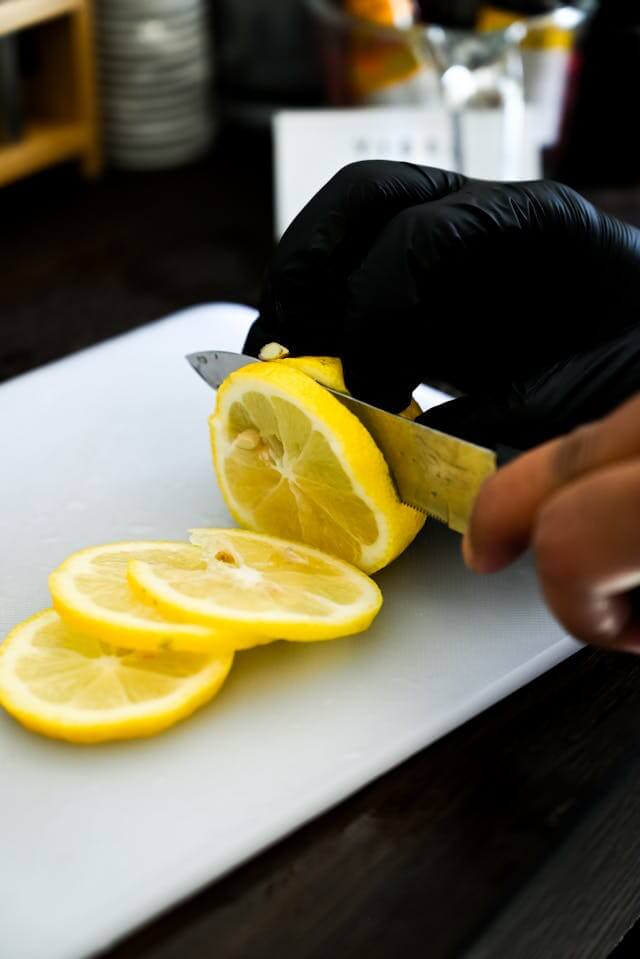
Paring knives are designed to fit snugly in the hand, often used like a precision tool or even a scalpel.
Their shorter length and lighter weight make them feel like an extension of your hand, perfect for chefs who value tight control.
Utility knives offer more balance and length, which makes them easier to use for longer periods on a cutting board.
If you’re doing repetitive slicing or trimming tasks, the utility knife offers more comfort and efficiency without sacrificing precision.
The pros and cons of Utility knife
Pros
- Highly versatile — perfect for slicing, trimming, and cutting soft or cooked foods.
- Compact size — easier to maneuver than a chef’s knife on smaller cutting boards.
- Great for sandwiches and lunch prep — ideal for slicing deli meats, cheese, and soft bread.
- Good for delicate tasks — can handle more finesse than a chef’s knife without being too delicate.
Cons
- Too small for heavy-duty chopping — struggles with hard vegetables or thick cuts of meat.
- Not specialized — less precise than a paring knife and less powerful than a chef’s knife.
The pros and cons of Paring knife
Pros
- Precision control — excellent for peeling, deveining, segmenting citrus, and decorative cuts
- Lightweight — easy to hold and maneuver for long periods.
- Perfect for handheld use — great when you’re not using a cutting board.
- Essential for small kitchen tasks — excels in situations where other knives feel bulky.
Cons
- Limited versatility — not effective on medium-to-large ingredients.
- Short blade — not ideal for slicing jobs or meal prep in bulk.
Should you sell utility knives/paring knives in your store?
Why not sell both? Your customers from different backgrounds with various needs and preferences will appreciate equipping themselves with the two. It will also lead to more sales to your store.
The utility knife is better for most shops with its adaptable nature if you’re on a budget or trying to see one of their sales performances first. Many home cooks afraid of using even a regular size chef’s knife will turn their heads to a utility knife.
However, if you’re catering to professionals more, the paring knife is a safer bet. Experienced cooks can use their chef’s knife for many tasks without requiring a medium-sized blade. A paring knife’s tiny blade for detailed cuts is what they will need.
We can help you make wholesale purchases, customize any blade to your liking, and ship them with branded packaging to your storefront. Don’t hesitate to request a free quote from us.
FAQs
What is a petty knife, and how does it compare?
A petty knife is the Japanese equivalent of a Western utility knife. It’s typically small (between 120mm–150mm) and excels at precision slicing, trimming, and detail work.
Compared to a utility knife, a petty knife is usually thinner and sharper, offering more finesse, especially for delicate ingredients.
Do I need both a utility and a paring knife?
If you cook often and value efficiency, yes. A paring knife is ideal for fine, detailed work like peeling or coring, while a utility knife bridges the gap between a paring and a chef’s knife for everyday slicing and prepping. Together, they cover a wide range of small to mid-sized kitchen tasks.
Can a utility knife replace a chef’s knife?
Not entirely. A utility knife is more nimble and better for smaller tasks, but it lacks the weight and blade length needed for chopping, mincing, or handling large ingredients. It’s a great backup or travel alternative, but not a full substitute for a chef’s knife.
